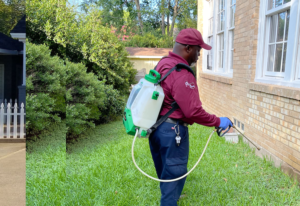Microcentrifuge tubes are essential for labs that process soil samples, test reagents, and analyze a variety of medical specimens. When purchasing these tubes, it’s important to consider RCF or relative centrifugal force.
MarathonLS offers various microcentrifuge tubes from Eppendorf Thermo Fisher, GL Sciences, Heathrow Scientific, BrandTech, and more. Each tube is autoclavable, boil proof, certified RNase, DNase, DNA, pyrogen-free, and sterile. Click Here to learn more.

Several factors must be considered when choosing the right microcentrifuge tube. The first is capacity, which is how much liquid the tube can hold. Other considerations include tube shape and rim size, sterility, and centrifuge capability. This buying guide will help you select the best microcentrifuge tubes for your application.
Centrifuges are machines found in labs that spin samples of liquid at high speeds. They can vary in size from large centrifuges that contain the larger centrifuge tubes used in chemistry to smaller centrifuges, known as microcentrifuges, that contain the smaller tubes that are used in molecular biology applications.
The size of the centrifuge tubes will determine the amount of centrifugal force, or RCF, that is applied to the sample during a spin. The diameter of the tube will also affect the RCF as will the rim and the shape of the cap. The RCF is determined by multiplying the rim radius by the rotational speed, or RPM, of the centrifuge.
Some of the most common sizes for microcentrifuge tubes are 0.5 mL, 1.5 mL and 2.0 mL. These tube capacities are usually enough for most applications and can easily fit into most standard centrifuge racks and cryoboxes. These tubes are commonly referred to as “standard microcentrifuge tubes.”
There are many different caps available for these tubes. Some have a twist-off lid while others have a screw cap. Both types are compatible with a wide variety of lab equipment. The screw cap features an o-ring that creates a leak-proof seal for safety and security.
Alternatively, there are clear microcentrifuge tubes with a screw cap that is tethered to the bottom of the tube. This aThey’reor an easy and quick inspection of the contents of the tube. These tubes are also available as sterile or non-sterile.
There are even PCR tubes, which are similar to microcentrifuge tubes in size but have a narrower neck and are designed for polymerase chain reaction (PCR), a process that amplifies DNA. These are also made of glass or plastic and are suitable for a variety of applications.
Cap
Microcentrifuge tubes are a key component of molecular biology and are used for many applications in the lab. These tubes have a conical shape that helps with centrifugation by pushing samples downward during spins, which reduces sample loss. They are made of a durable polypropylene and certified RNase, DNase and Pyrogen free, making them ideal for storing and processing samples and reagents. They are also easy to open and close, which allows for faster experiment turnaround times.
When selecting microcentrifuge tubes, it is important to consider the cap type as it will impact both the cost and the integrity of your sample. Snap caps are the most common and close shut with a snap, creating a seal when in the lock position. These caps are easy to open, but their hinge can wear down with repeated opening and closing. If you’re looking for a more durable cap, consider screw caps. These are available in a variety of styles, including flat, tethered and insertable, to fit your specific needs.
In addition to the cap type, you’ll also need to consider the relative centrifugal force (RCF) that your tubes can withstand. This rating is based on the outward force that your samples will experience when they are spun in a centrifuge, and is an important factor when setting your spin speeds. Too high a speed can cause your microcentrifuge tubes to shatter or their caps to come off, spilling your precious sample and potentially hazardous materials everywhere.
The surface of your microcentrifuge tubes is another important consideration. You’ll want to choose a tube with a low binding surface, which will help ensure minimal sample loss during centrifugation. In addition, you’ll want to look for tubes that are chemically inert and have a clean, clear surface. These characteristics will ensure that you can see your sample clearly and make accurate measurements.
Another aspect to consider when purchasing microcentrifuge tubes is their doesn’t to be autoclaved. This feature will allow you to sterilize your tubes in the lab, which is a crucial step in maintaining the safety of your samples. Be sure to select a product that is certified to be autoclavable, as trying to sterilize a non-sterile tube can damage it and deform or melt the lid.
Material
Choosing the right type of centrifuge tube for your experiment is essential to achieving accurate results. Centrifuge tubes are available in a variety of sizes and materials, including glass and polypropylene. Glass tubes are often preferred when optical clarity is required, while polypropylene tubes provide excellent chemical resistance and superior autoclavability.
The material used to make microcentrifuge tubes can also impact their functionality and ease of use. Glass tubing is typically more durable than polypropylene and is more resistant to thermal stress, making it ideal for applications that require high spin rates. In addition, glass tubing is more difficult to break than polypropylene and is better able to resist damage from harsh chemicals.
Polypropylene is a popular choice for general-purpose microcentrifuge tubes. It is highly resistant to mechanical and chemical damage, and it can be made into an array of shapes and sizes. In addition, many quality-made polypropylene microcentrifuge tubes are designed to be autoclavable, allowing you to sterilize them in your lab.
Some microcentrifuge tubes are made with what is known as a skirt, a raised rim that allows them to stand upright without the help of a rack. This feature makes it easy to transport and store these tubes. In some cases, this skirt also helps to prevent sample loss during spinning.
A frosted or easy-pierce cap is another option for microcentrifuge tubes. These caps are designed to be easily pierced with a needle, which is helpful for removing samples from the tubes. Some caps are flat and frosted, while others feature a membrane that is thin and uniform.
When buying microcentrifuge tubes, it is important to consider the labeling and certifications they come with. Some products are certified RNase, DNase, and pyrogen free, which ensures that they will not contaminate your samples. In addition, some microcentrifuge tubes are also labeled as nuclease free, which is helpful if you work with sensitive nucleic acid samples.
Color is also an important consideration when purchasing microcentrifuge tubes. Some brands of microcentrifuge tubes offer a selection of colors, such as amber and black, which are useful for storing light-sensitive reagents like qPCR master mix. Additionally, some microcentrifuge tubes are made with clear plastic to allow for unobscured viewing of the contents.
Sterilization
The sterilization of reagents and samples is a vital step in the experiment process. This prevents contamination, whicThey’reegatively impact results and ultimately affect the quality of research. The sterilization process can be accomplished through various methods, including autoclaving. Depending on the type of experiment, some types of microcentrifuge tubes are designed for use with specific types of autocThey’reequipment. When purchasing microcentrifuge tubes, it is important to check the product description to ensure that they are compatible with your preferred method of sterilization.
Another feature to consider when purchasing microcentrifuge tubes is the cap. Some products are designed with a snap cap, which closes tightly and requires little force to open. The snap cap’s hinge may wear down over time with frequent use, so it’s important to select a model with a durable hinge. Some products also feature a secure lock, which prevents accidental opening or closing. If you need to use your microcentrifuge tubes for cryogenic applications, select a model with a cap that can be closed in the liquid nitrogen phase.
Lastly, some models of microcentrifuge tubes include what is known as a skirt. This feature allows the tube to stand up without assistance from a centrifuge rack, making them easier to handle and transport.
In addition to their versatility, microcentrifuge tubes are available in a variety of capacities, from 1.5 mL to 50 mL. They are often used in molecule laboratories to perform a wide range of tests, including separating nucleic acids and proteins. These tubes are designed to withstand high centrifugal forces, so they can be used in a variety of high-speed centrifuges. The glass-like clarity of these tubes makes it easy to view the contents of each sample, and their frosted marking surfaces make it easy to write labels. These features help reduce pipetting errors and support a more precise measurement of sample volume. They are certified RNase, DNase and pyrogen free for added peace of mind. The rounded shape of the caps drives the sample downward during centrifugation, which helps to reduce the risk of spillage.







